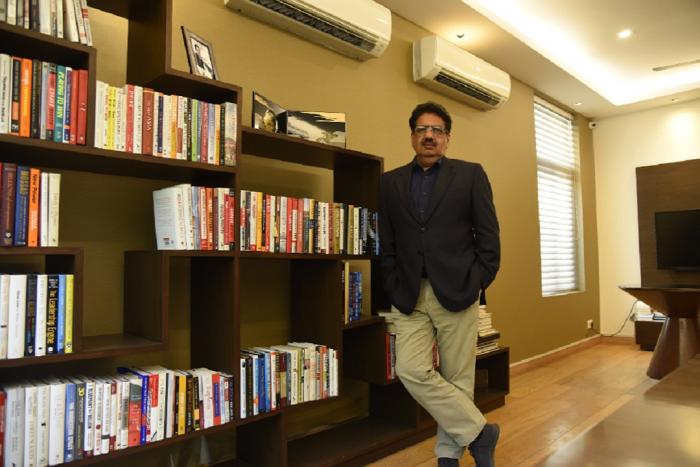Baithak aims to reform the learning curve of students in rural India

This app will also serve as an interactive and fun classroom for teachers and children. To make this a reality in partnership with the state governments we launched “Sampark Didi ke saath—Nau se Gyarah.”
The Covid-19 pandemic has resulted in schools shutting down, affecting the education of millions of children. Responding to the crisis, Vineet Nayar, chairman, Sampark Foundation and ex-CEO of HCL Technologies, along with a group of AI developers, educators, child psychologists, game designers and graphic animators have developed a platform called Baithak. “I envision Baithak as one of India’s largest free social learning and development platform in Hindi for millions of children studying in government schools in rural India,” he tells Sudhir Chowdhary in an interview. Excerpts:
Tell us about your new social platform Sampark Baithak. What was the idea behind it?
It is in the time of crisis that our brain, our ability to think and act to survive make us unique. Crisis has a lot of important life lessons to our children. And it is happening —children across the globe are using technology in different ways to connect, to learn, to entertain themselves, and to care for others, and so on. But unfortunately, this opportunity is mostly available to those who can afford it, leaving our rural children behind. Unlike their urban counterparts, our rural children don’t have or have poor access to technology. Another major concern is that most online learning platforms are in English, a big barrier for 144 million children in rural areas. So, we wanted to come up with a platform which can give our rural children an equal opportunity to continue their learning from home.
And hence Baithak was conceived. I envision Baithak as one of India’s largest “free” social learning and development platform in Hindi for millions of children studying in government schools in rural India.
How will the new platform will work to help rural kids?
Sampark Baithak harnesses social technologies to ensure the education of rural children in their mother tongue, allowing them to learn from a pool of educational resources and 2 lakh teachers who will be on the platform. This digital social teaching-learning management system involves an investment of `10 crore on cutting-edge technology and multimedia content—animated videos, interactive activity videos, puzzles, riddles, worksheets—that has been developed keeping in mind the background of a rural child and his teacher. All the content has been mapped to state textbooks, and developed in accordance with the states’ syllabus. It will allow over two lakh teachers to collaboratively create, modify and distribute student-centred content in rural India, while also serving as a social media platform for teachers, parents, children, state education officials, who can interact with each other on it. This makes it a unique hub of crowdsourced classroom innovations and community creation.
This app will also serve as an interactive and fun classroom for teachers and children. To make this a reality in partnership with the state governments we launched “Sampark Didi ke saath—Nau se Gyarah.” Sampark Didi, our mascot, will reach all children while they are at home from 9-11 am and share daily lessons mapped to state textbooks in form of animated videos, engaging activities and live Q&A. Since the children know Sampark Didi we expect excitement to come back to learning as she reaches their homes through “Sampark Baithak” app.
How did you manage to pull off this ambitious project during the lockdown?
Making a team that can deliver a high-quality product in such a short time was the biggest challenge we needed to overcome. But it was not the first time I tried this; I have always seen crisis as an opportunity to reinvent, to revisit your plans, policies, protocols and work environment, and a time to undertake challenging projects.
And while I was worried to find a handful of experts who could help me with the new app, a group of 28 inspired AI-developers, educators, child psychologists, game designers and graphic animators from around the world joined hands to make it a reality. Together, they have developed a platform that would ensure that the learning of one crore disadvantaged children in government schools do not stop despite the disruption. This platform followed rapid development and testing process, over just five weeks, and was anchored by the core team at Sampark Innovation Labs.

